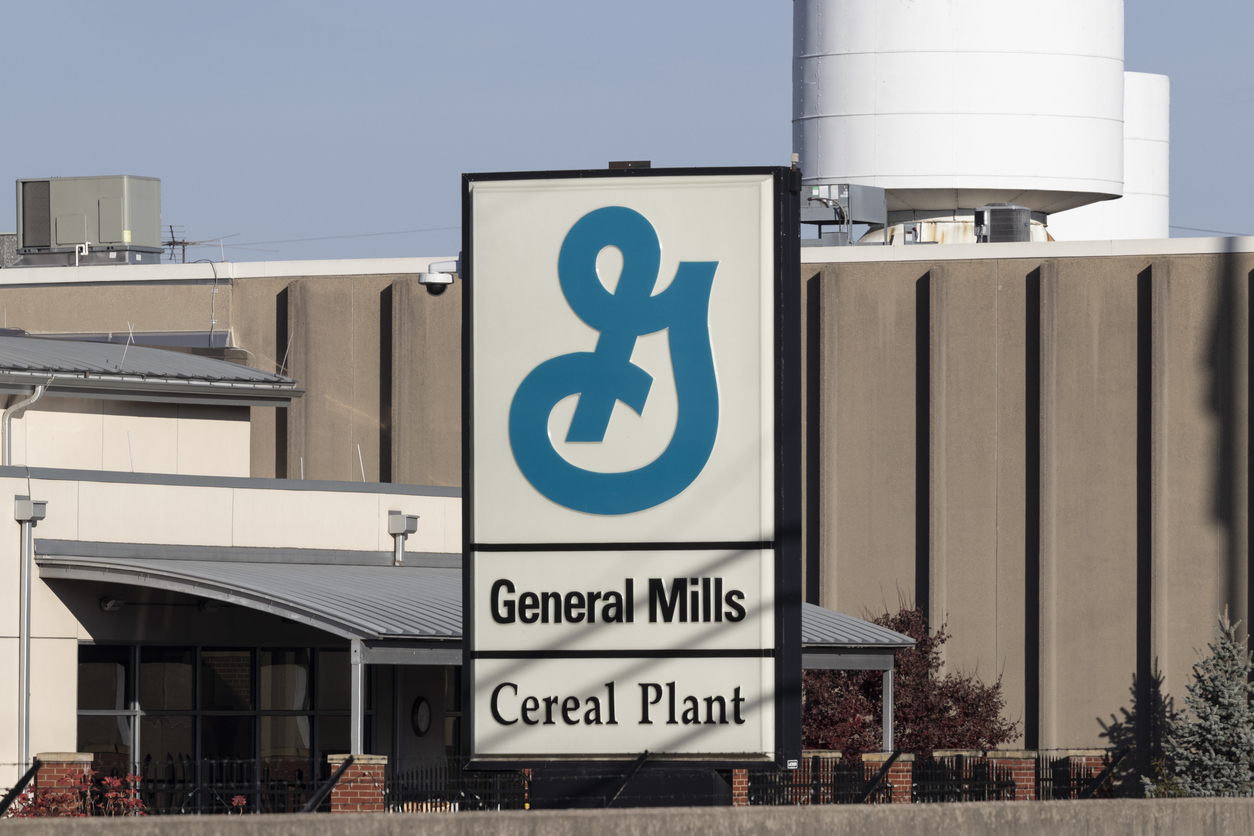
General Mills, Inc. (GIS), headquartered in Minneapolis, Minnesota, manufactures and markets branded consumer foods. Valued at $38.66 billion by market cap, the company's product portfolio comprises grains, ready-to-eat cereals, refrigerated yogurt, soup, meal kits, refrigerated and frozen dough products, dessert and baking mixes, bakery flour, frozen pizza and pizza snacks, snack bars, fruit and salty snacks, ice cream and frozen desserts, nutrition bars, savory snacks, organic products, and frozen and shelf-stable vegetables.
Companies worth $10 billion or more are generally described as “large-cap stocks,” and GIS perfectly fits into that category, signifying its substantial size, stability, and dominance in its industry. The company is renowned for its brands, such as Cheerios, Nature Valley, Blue Buffalo, Old El Paso, Pillsbury, Häagen-Dazs, Betty Crocker, Yoplait, Totino’s, Annie’s, Wanchai Ferry, Yoki, and more.
The leading food manufacturer has fallen 17.6% from its 52-week high of $82.59, which it hit on Jun. 27, 2023. Shares of GIS are down 1.2% over the past three months, underperforming the broader S&P 500 Cons Staples Sector SPDR (XLP) 2.8% gains over the same time frame.
Longer term, GIS has declined 16% over the past year, and in 2024, the stock is up 4.9%. By contrast, the XLP is up 7.6% on a YTD basis and 5.1% over the past 52 weeks.
The stock has been trading below its 50-day moving average since late May but above its 200-day moving average since mid-June.
On Mar. 20, GIS shares rose more than 2% after reporting its Q3 results. Its revenue of $5.10 billion surpassed the consensus estimate of $4.99 billion, but its organic revenue and sales volume declined 1% and 2% year over year, respectively. The company’s adjusted EPS came in at $1.17, beating Wall Street estimates of $1.06. GIS reaffirmed its 2024 guidance, with organic net sales expected between down 1% and flat. The company expects adjusted EPS to increase between 4% and 5% in constant currency, and free cash conversion is likely to account for at least 95% of adjusted after-tax earnings.
GIS’ overall performance can be attributed to the challenges posed by high inflation. Although the company reaffirmed its fiscal 2024 guidance, it had to combat inflationary pressures by undertaking price increases. Elevated operating costs impacted its bottom line in recent quarters, and value buyers have been shifting to cheaper alternatives.
Rival Kellanova (K) has outperformed GIS with 10.5% losses over the past 52 weeks. However, GIS’ gains on a YTD basis outshine K’s 4.3% returns over this period.
After its recent underperformance compared to the consumer staples sector, analysts are cautious about GIS’ prospects. The stock has a consensus rating of “Hold” from the 18 analysts covering it, but the mean price target of $70.82 is a 4% premium to current levels.
On the date of publication, Dipanjan Banchur did not have (either directly or indirectly) positions in any of the securities mentioned in this article. All information and data in this article is solely for informational purposes. For more information please view the Barchart Disclosure Policy here.






